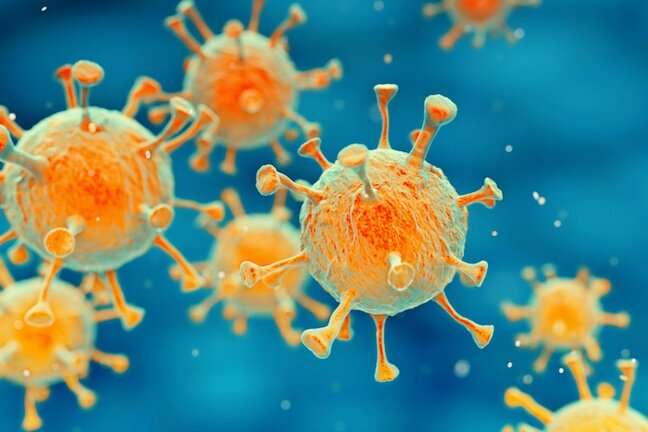
Coronaviruses infect humans by binding to specific proteins, known as receptors, on human cell surfaces. Researchers from the University of Minnesota, led by Professor Fang Li in the Department of Veterinary and Biomedical Sciences at the College of Veterinary Medicine, recently broke new ground in understanding how SARS-CoV-2, the virus that causes COVID-19, binds to its human receptor. Their findings were recently published in the journal Nature. This knowledge not only facilitates a better understanding of the infectivity of the virus, but also sheds light on its animal origin and provides guidance on vaccine and antiviral drug designs.
Several technologies, all with intrinsic limitations, have recently provided some information on how SARS-CoV-2 binds to its receptor. Li’s study is the first to use X-ray crystallography, the “gold-standard” method of structural biology at atomic resolution, to map out the 3-D structure of a protein on SARS-CoV-2 that binds to its human receptor. This 3-D imagery reveals much information about how the two proteins connect.
More specifically, the 3-D structure shows that:
- compared to the virus that caused the 2002-2003 SARS outbreak, the new coronavirus has evolved new strategies to bind to its human receptor, resulting in tighter binding of the receptor; and
- two related coronaviruses, one found in bats and one found in pangolins, can bind directly to the same human receptor as SARS-CoV-2, suggesting that SARS-CoV-2 originates from bats, either directly or with pangolins as an intermediate host. To infect humans, however, the bat or pangolin coronavirus needed to undergo mutations to gain more efficient usage of the human receptor.
The study has identified key mutations that potentially enabled the animal-to-human transmission of SARS-CoV-2.
With the 3-D structure in hand, the study has mapped out the important binding sites on SARS-CoV-2 for antibody drugs to act on, providing a blueprint for developing new antibody drugs that specifically target those sites. If a new antibody drug can bind to those sites on the virus more strongly and frequently than the receptor, it will block the virus out of cells, making it a potentially effective treatment for viral infections. Those sites are also valuable for vaccine designs, as vaccines containing those sites can induce the production of antibodies in the human body, which can prevent future viral infections.
Source: Read Full Article
